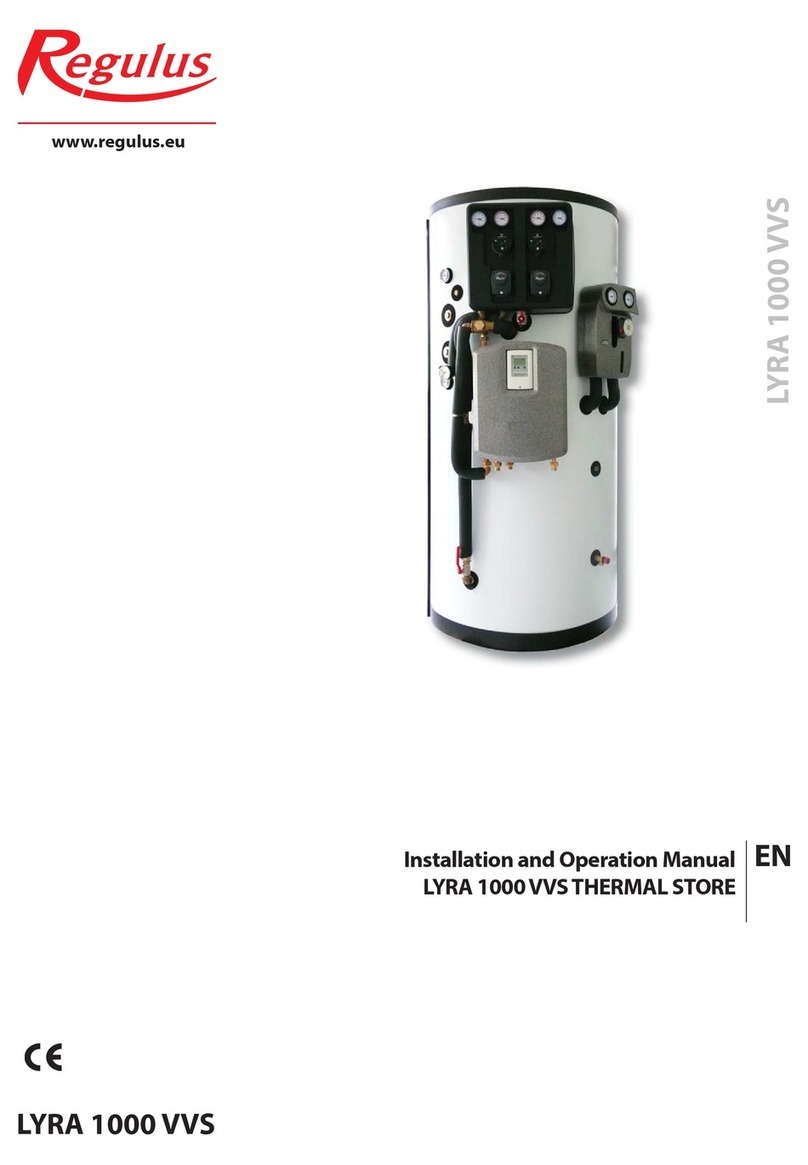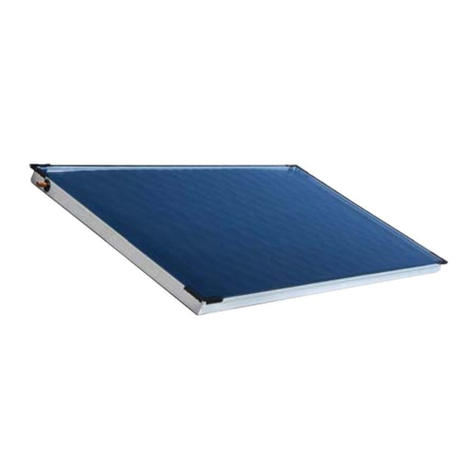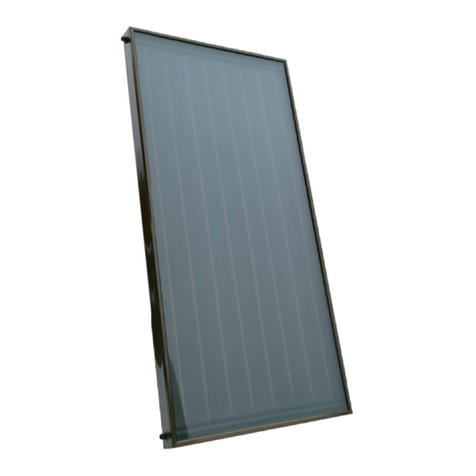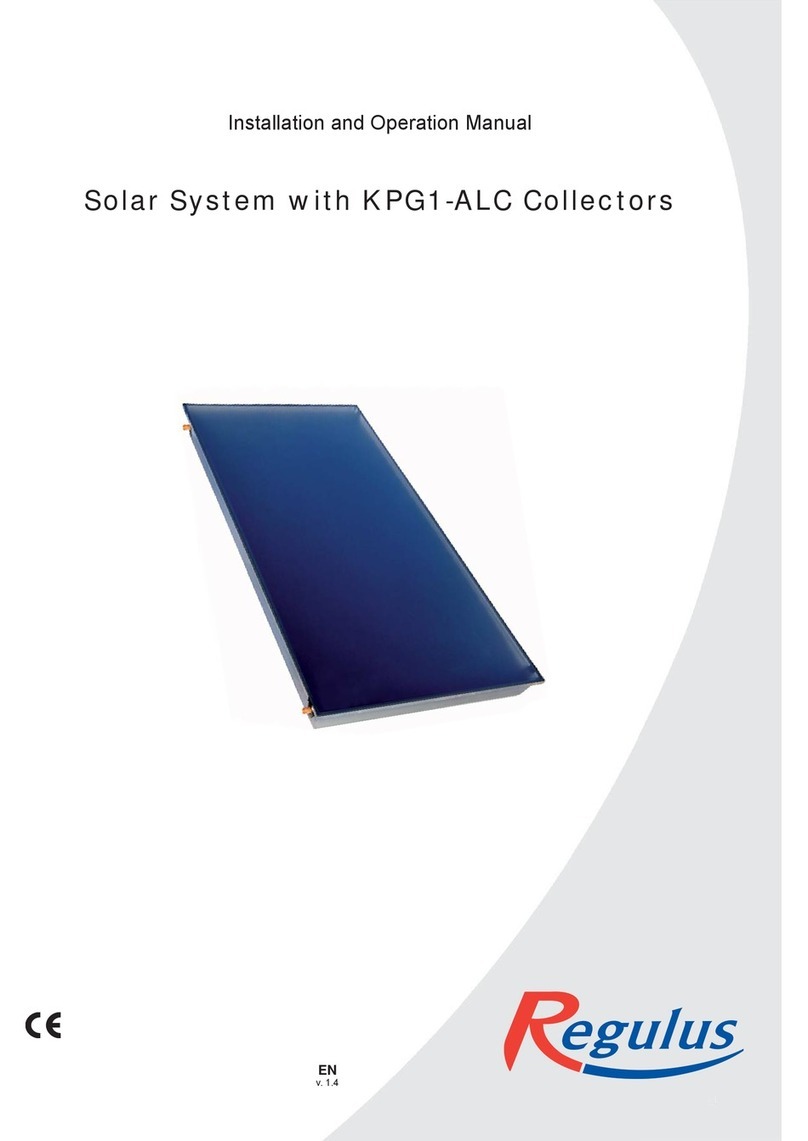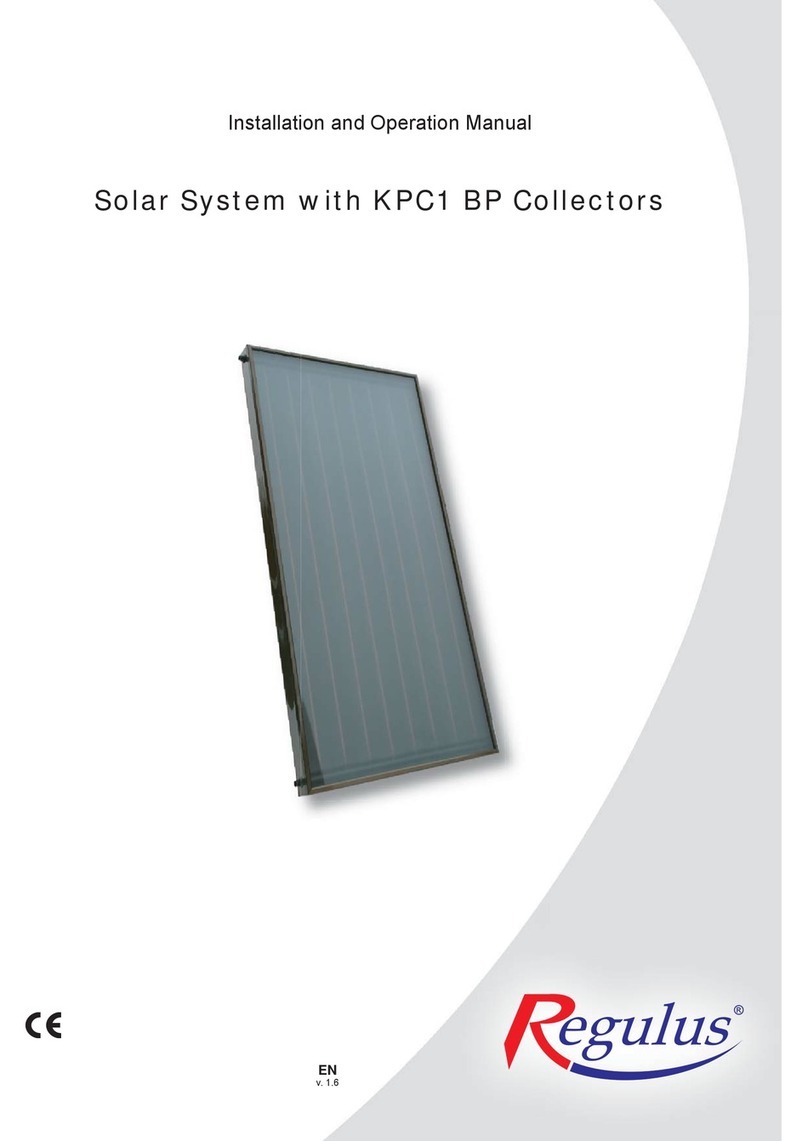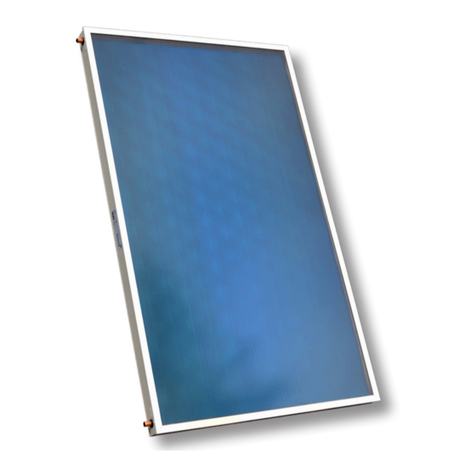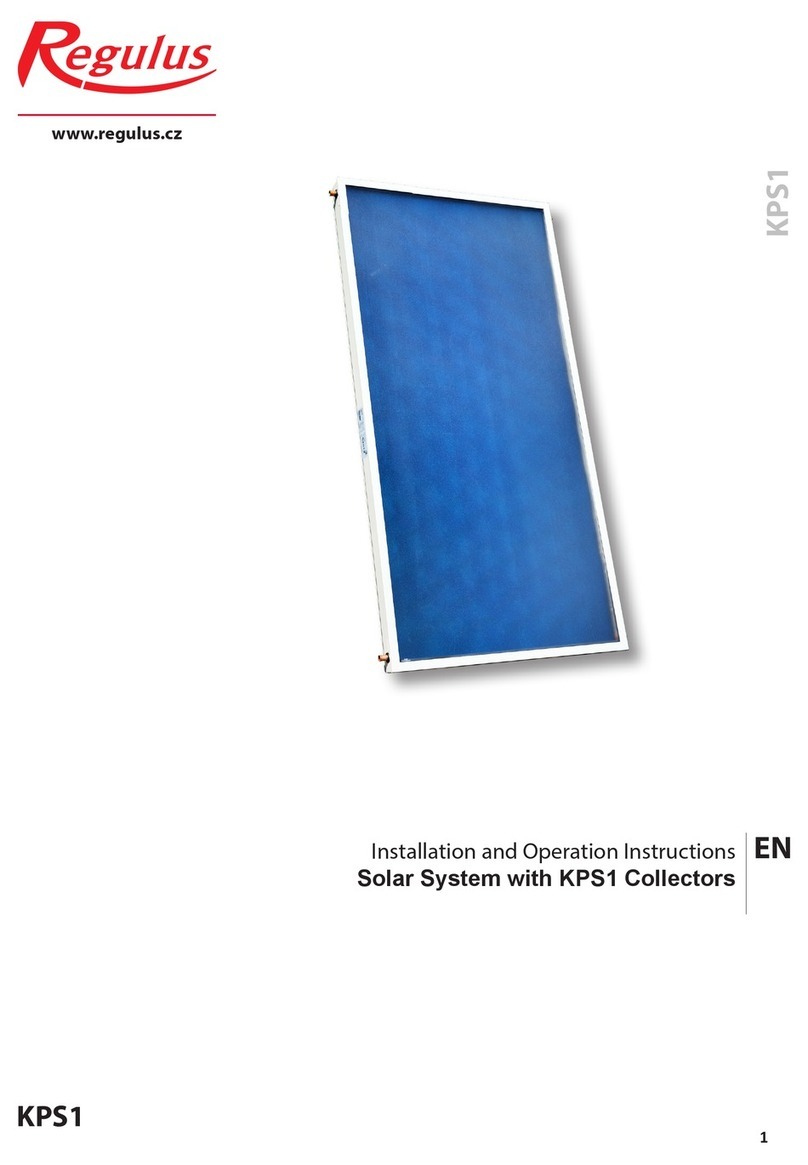
6
Assembly instructions
General and transport instructions
The mounting system is suitable for tiled roofs only. Installation must only be carried out by qualified personnel. The entire
information in these instructions is intended exclusively for such qualified personnel. Only the supplied material should be
used for the installation. Prior to starting installation and operation of the solar collector system, please inform yourself about
the applicable local standards and regulations. The use of a carrying strap is recommended for transporting the collector.
The collector must not be lifted at the connections or on the threading. Avoid impacts and mechanical influences on the
collector, in particular on the solar glass, the rear panel and pipe connections.
Statics - tiled roofs
The collectors may only be mounted on sufficiently load-bearing roof surfaces and substructures. It is imperative that the static
load bearing capacity of the roof or substructure is checked in terms of local and regional conditions prior to installation of the
collectors by the customer, if necessary through the involvement of a structural engineer. Particular attention should be paid to
the quality of the (timber) substructure in terms of the stability of the screw connections necessary for fastening the collectors.
The checking of the entire collector structure by the customer as per DIN 1055 part 4 and 5 or as per the applicable country-
specific regulations is particularly important in areas with heavy snowfall (note: 1 m³ powder snow ~ 60 kg / 1 m³ wet snow ~
200 kg) or in areas exposed to high wind speeds. The assessment should also take into account any particular circumstances
at the place of installation (foehn wind, air jets or eddy formation etc.) which can lead to increased loads. When selecting the
installation site it should be ensured that the maximum load is not exceeded either by snow or wind forces. As a rule, collector
arrays must be installed such that any possible collection of snow is prevented from reaching the collectors by snow barriers
(or through special forms of installation). The distance to roof ridges/edges must be at least 1 m. Max. wind speed 150 km/h
and max. snow load 1.4 kN/m2
Note: Installing a collector array signifies an intervention into an (existing) roof. Roof coverings, e.g. tiles, shingle and slate, especially in
the case of converted and inhabited loft spaces or roofs with less than the minimum slope (with regards to the covering) require additional
measures by the customer, e.g. sarking membranes, as security against water penetration caused by wind pressure and driving snow.
Lightning protection / Equipotential bonding of the building
For installations of solar collectors, the standard for lightning protection EN 62305 Part 1-4 shall be respected.
Connections
Depending on the design, the collectors must be connected with one another and/or the connection pipes using screw fit-
tings (G1“ internal/external thread) with flat-face sealing. Ensure correct placement of the flat gaskets. If flexible pipes are
not used as connectors, precautions must be taken to protect the connection pipes against temperature fluctuations caused
by heat expansion, e.g. expansion bends and flexible piping (see Connecting the collectors to one another/Operational
recommendations). Larger collector arrays must be assembled with expansion bends or flexible members inserted in the
links. (IMPORTANT: check the pump design). When tightening the union nuts, always balance (counter) the torque with a
pipe wrench or another spanner to prevent damage to the absorber.
Collector inclination / General notes
The collector is suitable for angles between 20° (minimum) and 65° (maximum). The collector must be installed so that rear
ventilation for preventing the diffusion of moisture in the collector is guaranteed. The collector connections and the ventila-
tion openings must be protected against the penetration of water as well as contamination such as dust etc.
Cleaning
Clean the water courses of the sheet metal edging at least once per year (or more often if required).
Legal guarantee
Legal guarantee claims can only be made if the supplier‘s own antifreeze has been used and maintenance has been carried
out correctly. Installation by qualified personnel with absolute adherence to the instructions is a prerequisite for the justifi-
cation of claims.






